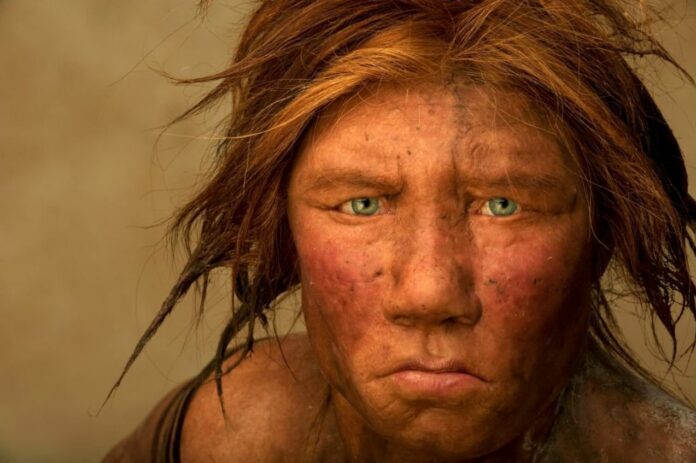It is commonly believed that climatic change, sickness, or violent clashes with modern humans were to blame for the extinction of the Neanderthals.
But an expert from the Natural History Museum argues that Neanderthals’ evolutionary dead-end may have been caused by their romantic relationships with homo sapiens, not their wars.
Even while Neanderthal DNA has been discovered in humans, homo sapiens DNA has never been identified in any Neanderthal fossils, according to Professor Chris Stringer, the Natural History Museum’s research head in human evolution.
He argues that gene transmission may have occurred in just one direction, maybe because the offspring of a Neanderthal-human union could only successfully mate with humans.
In Neanderthal populations, Homo sapien DNA would be lost after one generation, but it might persist permanently in Homo sapien communities.
It’s possible that Homo sapiens tribes were more skilled in ‘capturing’ Neanderthal females for the sake of breeding, leaving Neanderthal communities without viable females with which to continue their line.
There is a tonne of proof that Neanderthals interbred with humans, but nothing huge support the opposite, according to Prof. Stringer. This trend shows that Neanderthals were mixing with modern humans, which would have resulted in the depletion of the Neanderthal population’s prime-breeding age demographic.
One theory suggests that Neanderthal males were the ones to capture Neanderthal women, rather than the other way around, according to the author.
“If homo sapiens were breeding into the Neanderthal gene pool it was very rare, or it was not successful,” adds the author.
“Sometimes hybridization doesn’t work in one direction.”
“Perhaps homo sapiens groups acted like sponges in absorbing pockets of late Neanderthals, and maybe that as much as anything else led to the eventual demise of the Neanderthals as a viable population.”
Neanderthals and modern humans once shared a single ancestor, but their lines began to split some 600,000 years ago. In Europe and Asia, they first came into contact with one another about 60,000 years ago, but Neanderthals vanished within 20,000 years.
About 2% of Neanderthal DNA is still present in modern humans living outside of Africa, and this DNA is thought to play a role in humans’ susceptibility to particular diseases and conditions.
It is thought that 40% of the complete Neanderthal genome is distributed globally, with different populations carrying differing portions of Neanderthal DNA.
However, there are regions of the human genome (known as deserts) that are devoid of Neanderthal DNA and which seem to be connected to the brain and speech, providing hints about the mental and vocal capacities of Neanderthals.
Prof. Stringer thinks that if Neanderthals and humans had mated, more females might have been successfully born, thus giving homo sapiens communities a breeding advantage.
As opposed to trying to combine an ‘x’ and a ‘y’ chromosome from separate species, females contain two ‘x’ chromosomes rather than an ‘x’ and a ‘y,’ therefore matching them is biologically simpler.
According to Prof. Stringer, finding more examples could change the picture and suggest that the absence of human DNA in Neanderthal fossils may be an anomaly in the fossil record.
“There are more Neanderthal genomes coming out, but,” the author writes, “if it continues to show a lack of DNA from homo sapiens, then we have to start thinking that interbreeding is important.”
“If a larger sample of genomes from the critical 40 to 45,000 year ago period maintains the present pattern of Neanderthal DNA entering homo sapiens gene pool but not the reverse, this might provide a mechanism for the demise of Neanderthal populations.
“If fertile Neanderthals were regularly being absorbed into homo sapiens groups during that time period they were effectively being removed from Neanderthal gene pools, and such a consistent drain of prime-age individuals is not something that could be sustained for long in small hunter-gatherer groups.”
PaleoAnthropology published the study.
Image Credit: Joe McNally/Getty Images
